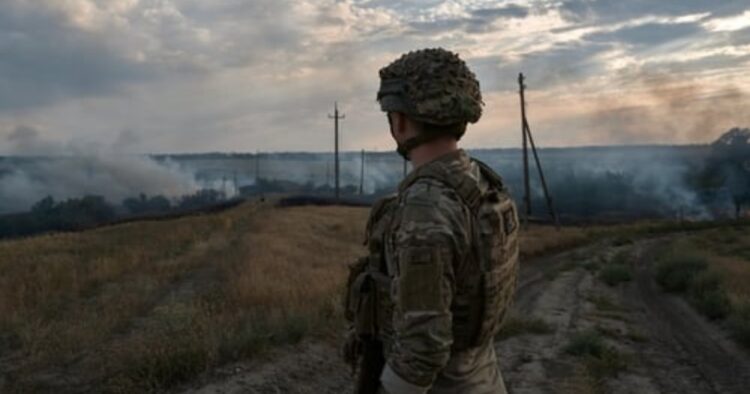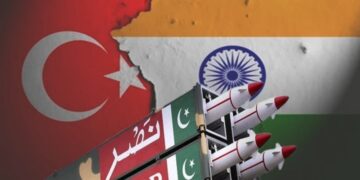On Wednesday, Russia reported intense fighting against Ukrainian forces that have breached its southern border, coming close to a key natural gas transmission hub. This incursion marks one of the largest attacks on Russian soil since the conflict began.
Since Ukraine’s counteroffensive failed to make significant progress in 2023, Russia has managed to gain ground, taking over 420 square kilometers of Ukrainian territory since mid-June. However, on Tuesday, Ukraine launched a counterattack. The battle continued through the night into Wednesday, focusing on the area northwest of Sudzha, a town located 530 kilometers southwest of Moscow. Russia’s defense ministry reported that Ukrainian forces had launched a significant provocation, with President Vladimir Putin calling it an “attack” from the “Kyiv regime.”
Russian Military Actions
Russian Chief of General Staff, Valery Gerasimov, claimed that Russian forces successfully stopped an advance by up to 1,000 Ukrainian soldiers. He mentioned that Russian troops, along with border guards and reinforcements, used air strikes, missiles, and artillery to halt the Ukrainian push and were working to drive them back to the border.
The Ukrainian military has maintained strict silence about the situation at the border, and its General Staff has not confirmed any ongoing operations. In its daily update, the Ukrainian military reported that Russia had intensified air strikes on Ukraine’s Sumy region, which is across the border from Kursk. Ukrainian officials have mandated the evacuation of civilians from more than 20 settlements near the border due to the increased bombings.
Gas Transit and Strategic Importance
Sudzha is crucial for Russia’s natural gas exports to Europe, as it serves as the last operational trans-shipping point for gas flowing through the Urengoy–Pomary–Uzhhorod pipeline. This pipeline delivered around 14.65 billion cubic meters of gas in 2023, accounting for approximately half of Russia’s natural gas exports to Europe.
Despite the fighting, Ukraine’s gas transmission operator reported that gas transit to European consumers is continuing normally. Additionally, the Kursk nuclear power station is located 60 kilometers northeast of the conflict zone.
The battles around Sudzha come at a critical time in the conflict, which is the largest land war in Europe since World War II. Ukraine is losing territory, and there are concerns that U.S. support might decrease if Donald Trump wins the upcoming presidential election.
Trump has suggested that he would end the war, so both Russia and Ukraine are eager to strengthen their positions on the battlefield. Ukraine aims to demonstrate its ability to mount significant operations and hold Russian forces in place.
ALSO READ: “Russia Warns Ukraine: Peace Terms Will Get Tougher if Talks Are Delayed”
Russian and Ukrainian Claims
Russian military bloggers reported fierce fighting, with some suggesting that Ukraine might be opening a new front. Russia has dispatched additional reserves to bolster its defenses. Gerasimov reported heavy losses for the Ukrainian attackers, but these figures have not been independently verified.
President Putin accused Ukrainian forces of targeting civilian areas indiscriminately, a claim both sides deny. Russian Telegram channels circulated unverified images of damaged homes, and local officials in Kursk reported casualties but did not provide specific numbers.
Earlier this year, paramilitary groups supporting Ukraine had penetrated parts of Kursk and Belgorod regions, leading to a major Russian military response aimed at creating a buffer zone in Ukraine’s northeast.

















Comments